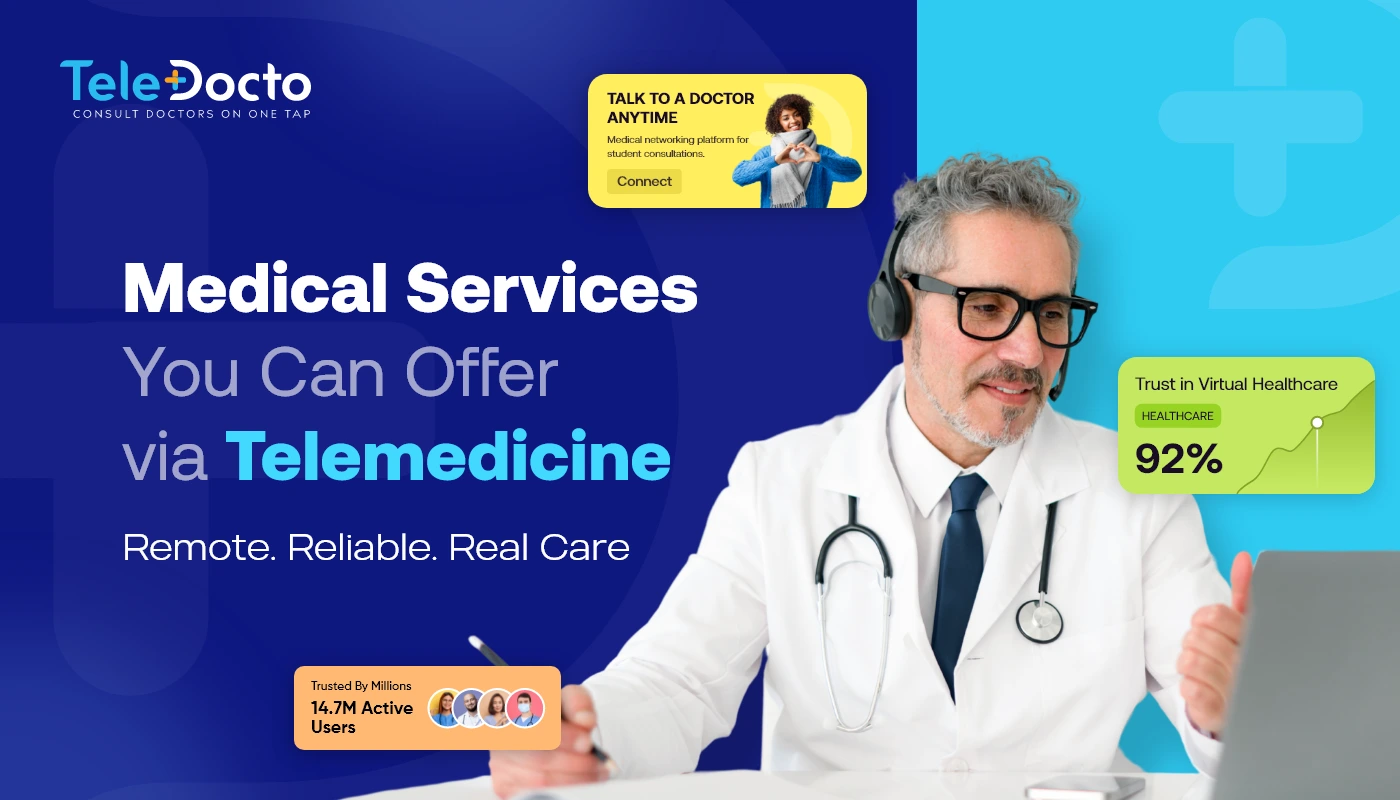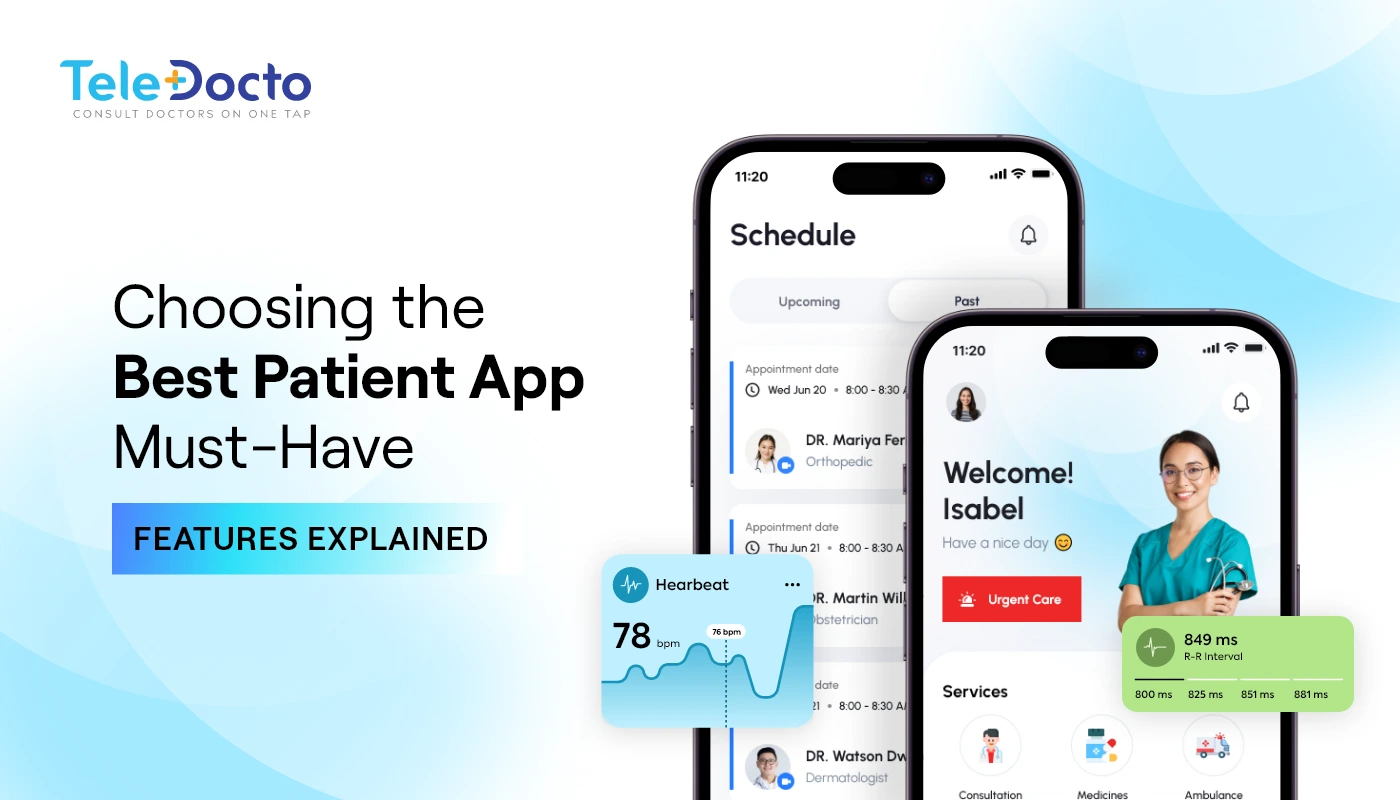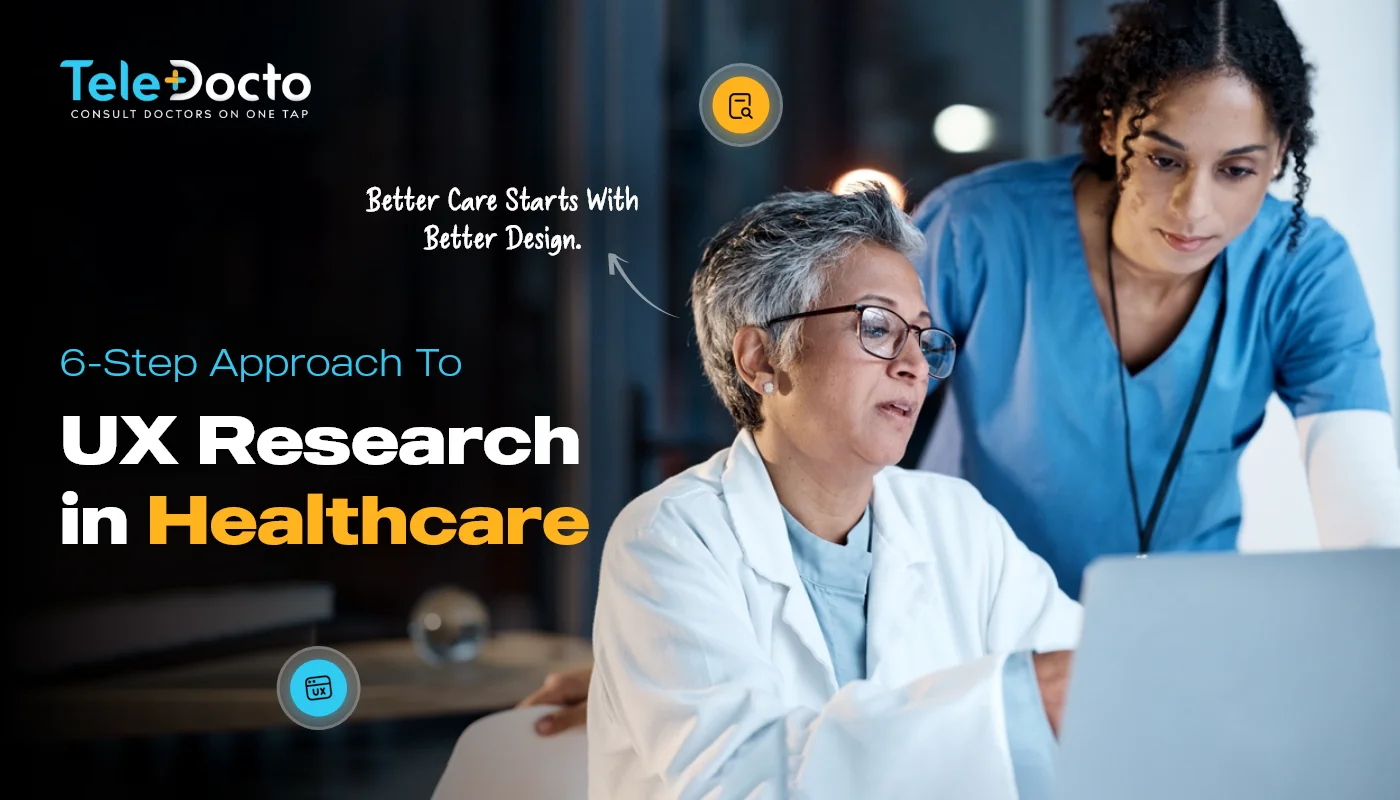
What Types of Medical Services Can Be Effectively Delivered Through Telemedicine?
Going to the doctor’s clinic is often challenging due to long travel distances, waiting times, and crowds there! It clears that the way traditional healthcare delivery was managed, has certain limitations. Enter telemedicine; not as a replacement, but as a modern upgrade to the healthcare department.
From a general consult to specialist care, telemedicine has redefined the patient-doctor experience in a country like India where access to quality healthcare can be lopsided. This change is spearheaded by Teledocto, a system which allows patients to receive treatment at their convenience.
Read on about the amazing things you can do with a telemedicine platform like Teledocto and discover everything that is possible.
Why Telemedicine Matters More Than Ever?
Once we’ve established what telemedicine can provide, let’s discuss the reasons its highly important these days.
- Accessibility – Residents in small towns, small cities, or those with limited mobility can now consult top-rated doctors at any time.
- Affordability – There are no travel costs or long waits, only straightforward, affordable care.
- Continuity – Follow-up and chronic care can be done remotely.
- Privacy – Ideal for mental health, sexual health and women’s wellness visits.
Pro Tip – What used to involve waiting rooms and paperwork is now being conducted over secure video calls — with your prescriptions, reports and medical records at your fingertips.
What Services Can Be Delivered Using Telemedicine?
Telemedicine is not just for routine checkups anymore. Now, it is the instrument of choice for every kind of medical care from initial consultation to recovery advice. Read below the areas where virtual care shines by delivering quicker, more convenient and more connected care without the need to take an in-person appointment.
-
Primary Care Consultations
Healthcare centers are swamped with non-emergent visits that could be managed from afar. A virtual first line consultation system makes it easy to triage flu, fever, sore throat or seasonal allergies. If low-risk patients can be funneled through tele consults, hospital systems and clinics will alleviate crowds and maximize in-office bandwidth to meet needs of high-acuity patients.
-
Chronic Disease Management
Patients with hypertension, diabetes or respiratory illnesses need frequent touch, not just prescriptions. Telemedicine makes it possible to do structured follow-ups, monitor trends and adjust medications — all virtually. Organizations enjoy better patient adherence and lower readmissions, while making the most of staff time among more patients.
-
Mental Health & Therapy
Mental health has long been challenging to scale because of therapist availability and sheer geographic challenge. This gap is filled by a digital interface. Virtual sessions allow therapists to see more clients and can be scheduled more flexibly. Health platforms and payors can add therapy to their offerings, expanding their service line-ups and increasing the stickiness of their services.
-
Dermatology Consultations
Most skin concerns are visible and require only visual touchpoints. Clinics can expand dermatology care to rural areas with high-resolution image uploads and asynchronous assessments. This online software is particularly useful for pharmacy chains, cosmetic clinics, and diagnostic labs interested in adding skin care consults with a low barrier to entry.
-
Pediatric Care
This is partly because parents don’t want to wait for an appointment with a doctor when their child has a rash or a mild fever. Daycares and pediatric offices that want to utilize tele consults for first-response consults, keeping tabs on growth, or feeding concerns. It’s a convenience that parents can treasure with, and also, it’s the one that helps develop long-term loyalty for care providers.
-
Nutrition & Diet Planning
Dietary assistance is not only for fitness junkies. As interest grows in the preventive gun, employers and healthtech startups can provide remote dietician access for chronic illness management, postnatal recovery sessions or just general well-being purposes. Individualized programs, tracking outcomes, and regular sessions can monetize through subscription tiers or directly added to your plans of care.
-
Remote Monitoring
Today’s smart gadgets gather more of your health data than ever. Hospitals and home health agencies can proactively care for at-risk populations by integrating remote vital monitoring into clinical workflows. Alert-responsive interventions, automatic patient reminders, and predictive trends drive down complication rates and make preventive care a business asset.
-
Specialist Consultations
When you need a specialist it shouldn’t require going cross-town or trekking to a city. Using a virtual consult platform, local health networks and insurers can link patients in other metros with cardiologists, neurologists or oncologists. This increases access, speeds diagnosis and assures the continuation of care within the same system.
Building the Future of Healthcare, One Screen at a Time
Telemedicine is no longer “the future”—it’s happening now. And platforms like Teledocto are at the forefront, empowering both patients and healthcare providers with:
- White-label telemedicine infrastructure for clinics, hospitals, and health tech startups.
- Scalable platforms that support everything from video consultations to EMR integration.
- Secure cloud-based storage, real-time notifications, and multi-device accessibility.
- Multilingual interface to bridge digital and linguistic gaps for rural and urban users alike.
Whether you’re a patient looking for care or a doctor looking to grow your practice, Teledocto offers the tools to connect, care, and cure—digitally.
Final Thoughts: Healthcare Beyond Hospital Walls
The question today isn’t “Can healthcare be delivered online?” It’s “How much more can we do with it?”
From flu symptoms to fertility tracking, telemedicine is redefining what it means to get care. With platforms like Teledocto, healthcare is no longer bound by walls, working hours, or postal codes. Whether you’re a patient in a small town or a specialist in a city hospital, the doctor would see you now—right through your screen.
Frequently Asked Question
Telemedicine services usually offer primary care consultations, chronic disease management, mental-health counseling, dermatology evaluations, pediatric consultations, nutritional counseling and even specialist appointments — all without requiring a visit in person.
Emergency situations might obviously require in-person care, but mental health support aside, telemedicine is great for follow-up appointments, visual diagnosis (think skin issues), chronic illness management and the like. Diagnostic tools Remote monitoring devices also can be part of many platforms.
Yes. Parents find it handy for minor pediatric medical issues like rashes or fevers while elderly patients use virtual care for ongoing chronic care, prescription refills and remote health tracking – thus saving them time and effort.
Trustworthy telemedicine services feature encrypted video calls, secure cloud storage and HIPAA-compliant practices for your patient data. Make sure you always use a provider that takes the strictest data privacy steps.
Teledocto is an elastic, white-labeled solution for clinics, hospitals and startups. Multilingual interface, EMR integration, secure video consults, and cross device compatibility make it suitable for both rural and urban use.
Yes, Teledocto does link patients with a broad array of specialists, such as cardiologists, dermatologists, neurologists and others. It’s simple to schedule a virtual appointment and share any medical history or reports for a better diagnosis and treatment.
Recent Blogs

Telemedicine has changed the way how patients connect with doctors. From routine check-ups to specialist consultations, more people now expect healthcare to be just a click away. But for hospitals, clinics & startups running a telemedicine platform, the real challenge isn’t just about having the technology. It’s about having enough qualified, licensed providers to meet […] Read more

Patients are no longer willing to stand in long queues or make endless calls just to schedule an appointment or check test results. A patient portal app changes this dynamic, putting essential healthcare services right into patients’ hands and making communication and care management seamless. It gives patients the same level of simplicity and ease […] Read more

Great design begins with understanding and research. Addressing user needs is crucial in starting a new project or revamping an existing one! Skipping user experience (UX) research early on can lead to expensive mistakes down the road. In healthcare, this step becomes even more critical—it ensures your product is user-friendly and avoids frustrating UX issues. […] Read more